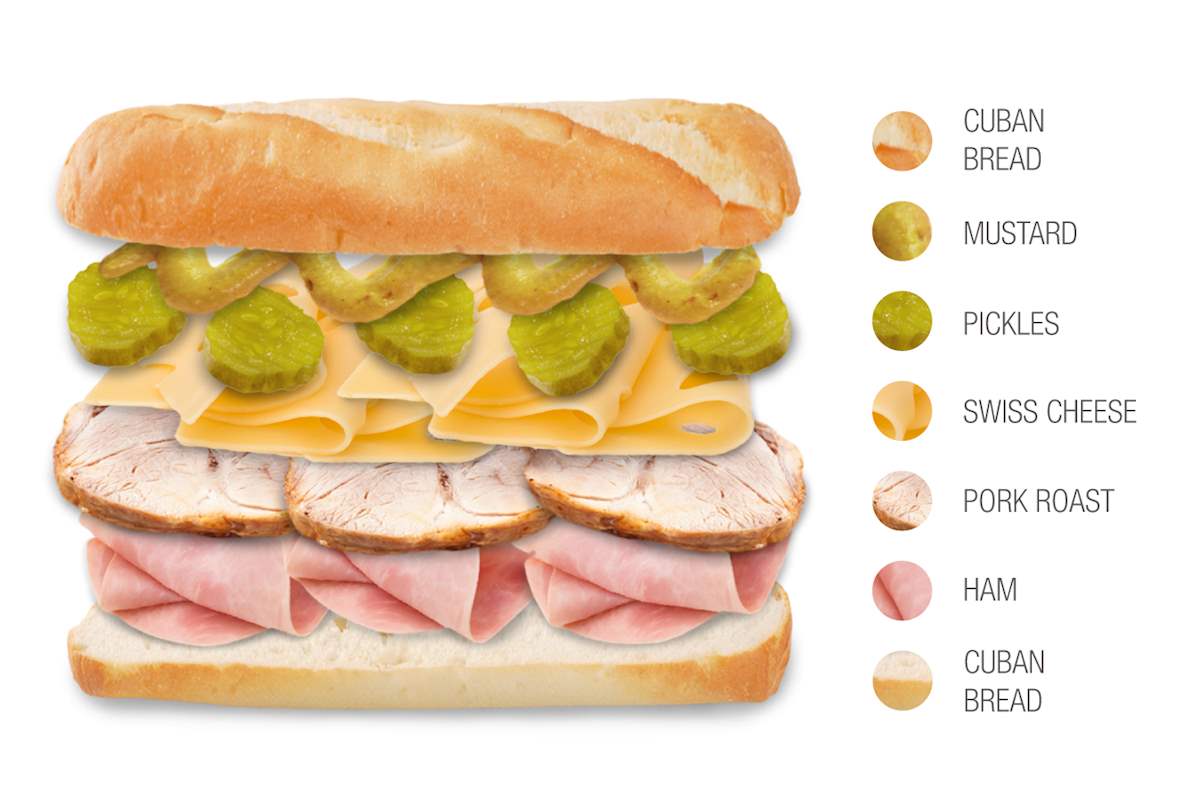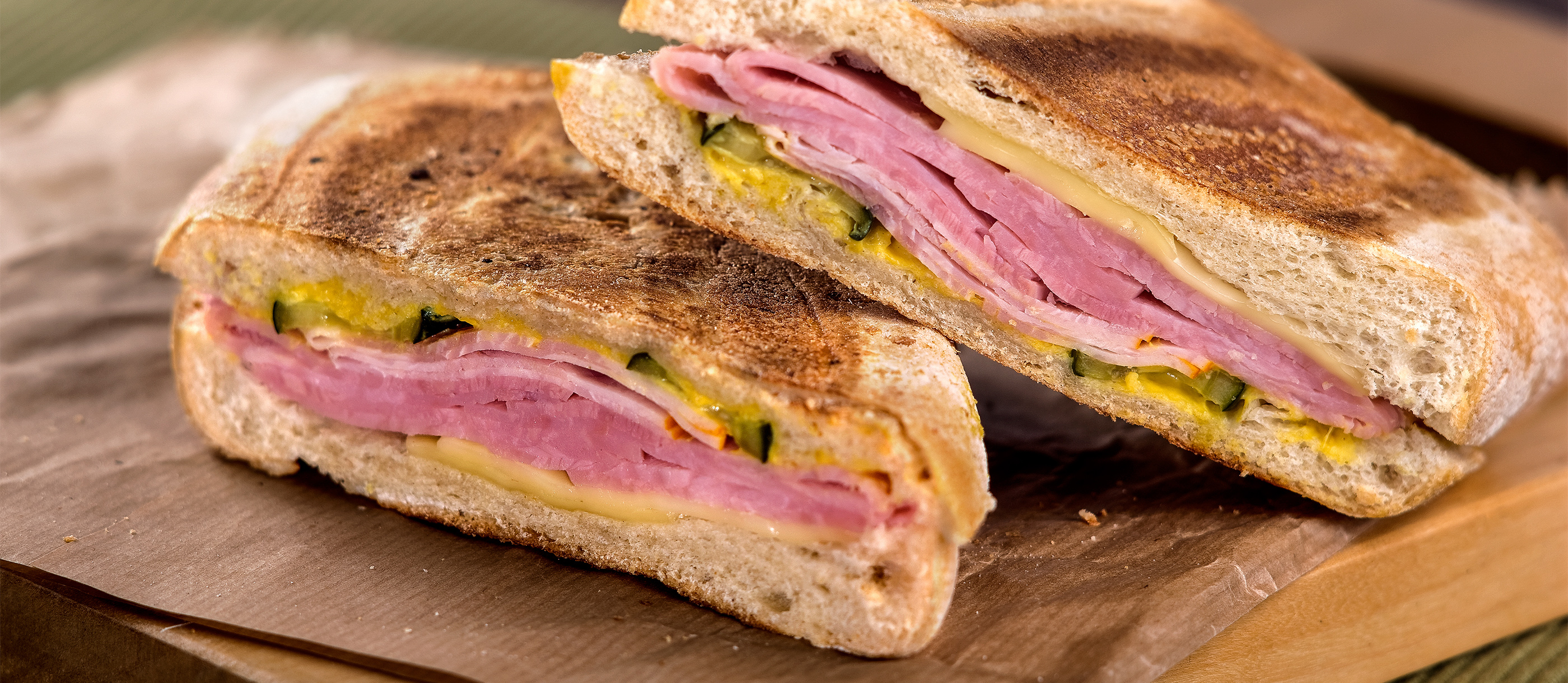The Cuban Sandwich: A Taste of History, Pressed Between Two Slices of Bread

The Cuban sandwich. The very name conjures images of sun-drenched streets, vibrant culture, and a satisfyingly hefty sandwich packed with flavor. More than just a meal, it’s a cultural icon, a testament to the melting pot of influences that shaped the unique identity of Florida and, more specifically, its Cuban-American community. Its story is a delicious blend of immigration, ingenuity, and the enduring power of simple, perfectly executed ingredients.
The precise origins of the Cuban sandwich are shrouded in a bit of delicious mystery, a testament to its organic evolution within the vibrant culinary landscape of Tampa and Key West. While no single inventor can claim sole credit, its development is a fascinating narrative of cultural exchange and culinary adaptation. The sandwich, as we know it today, is the result of a confluence of influences, primarily Cuban, Spanish, and American.
Its journey begins in the late 19th and early 20th centuries, with the influx of Cuban immigrants to Florida. These immigrants brought with them their culinary traditions, including the "medianoche," a small, sweet bread roll often filled with savory ingredients. This provided a foundational element, albeit a smaller and sweeter one, for the sandwich that would eventually become a staple. The influence of Spanish cuisine is also evident, particularly in the use of cured meats like ham. The American contribution is arguably the most significant, introducing elements like roast pork and Swiss cheese, which weren’t necessarily traditional components of Cuban cuisine.
The exact combination of ingredients solidified over time, often evolving based on the preferences of individual sandwich makers and the availability of ingredients. Early versions might have differed slightly in their composition, but the core elements gradually coalesced, resulting in the sandwich we recognize today. This organic evolution is part of what makes the Cuban sandwich so fascinating – it’s a living testament to a culinary tradition that continues to adapt and evolve, while retaining its core identity.
The Anatomy of a Perfect Cuban:
The magic of the Cuban sandwich lies not just in the individual ingredients, but in their harmonious interplay. Each component plays a crucial role in creating the symphony of flavors and textures that defines this culinary masterpiece. Let’s break down the essential elements:
-
The Bread: Traditionally, Cuban bread is used, a crusty yet soft roll with a slightly sweet flavor. Its airy interior is crucial for absorbing the juices from the fillings without becoming soggy, while its crisp crust adds a satisfying textural contrast. The bread is often slightly oblong, providing the perfect canvas for the generous fillings. Finding authentic Cuban bread is key to achieving the ideal Cuban sandwich experience.
-
The Roast Pork (Lechón Asado): This is arguably the star of the show. The slow-roasted pork, infused with its characteristic savory and slightly sweet flavor, provides a succulent and tender counterpoint to the other ingredients. The quality of the roast pork is paramount – it needs to be juicy and flavorful, offering a depth of taste that elevates the entire sandwich.
-
The Ham (Jamón): Typically a thinly sliced, cured ham, it adds a salty and savory dimension, complementing the sweetness of the pork and the tanginess of the pickles. The quality of the ham is crucial; a high-quality ham will contribute significantly to the overall flavor profile.

-
The Swiss Cheese: The melting Swiss cheese is essential for its creamy texture and nutty flavor. As it melts under the heat of the press, it binds the ingredients together, creating a cohesive and satisfying mouthful. The slight tanginess of the cheese complements the other flavors beautifully.

The Pickles (Pepinillos): These are usually dill pickles, providing a crucial acidic counterpoint to the richness of the other ingredients. The tangy, crunchy pickles cut through the richness, adding a refreshing element to each bite. They also add a textural contrast to the soft bread and melting cheese.
-
The Mustard: A thin layer of yellow mustard, usually spread on both slices of bread, adds a subtle pungency that enhances the overall flavor profile. It’s a simple addition, but it’s crucial in tying all the elements together.

The Pressing Process: A Culinary Ritual
The final, and arguably most crucial, step in creating the perfect Cuban sandwich is the pressing. This is where the sandwich transforms from a collection of ingredients into a cohesive, flavorful whole. The sandwich is placed in a panini press or a heavy skillet, often weighted down with another heavy object. The heat and pressure melt the cheese, crisp the bread, and create a perfectly pressed sandwich with a satisfyingly compact structure. This process is not just about aesthetics; it’s crucial for achieving the desired texture and flavor. The pressed sandwich is significantly more satisfying than an unpressed one, with a delightful combination of crispy exterior and warm, melted interior.
Beyond the Classic: Variations and Interpretations
While the classic Cuban sandwich has a defined structure, variations exist, reflecting the adaptability of the recipe and the preferences of individual sandwich makers. Some variations might include different types of cheese, such as provolone or pepper jack. Others might experiment with different cured meats, adding chorizo or salami. However, deviations from the core ingredients risk losing the essence of the authentic Cuban sandwich. The beauty of the classic recipe lies in its simplicity and balance – each ingredient plays a vital role, and altering it significantly can disrupt the delicate harmony.
The Cultural Significance of the Cuban Sandwich:
The Cuban sandwich is more than just a delicious meal; it’s a symbol of cultural identity and resilience. It represents the fusion of Cuban, Spanish, and American culinary traditions, reflecting the complex history of immigration and cultural exchange in Florida. In Tampa and Key West, the sandwich holds a special place in the hearts of the community, representing a tangible connection to their heritage. The sandwich is often associated with family gatherings, celebrations, and casual meals, reinforcing its status as a beloved culinary tradition.
Finding the Perfect Cuban:
For those seeking the authentic Cuban sandwich experience, venturing to Tampa or Key West is highly recommended. These cities boast numerous establishments that have perfected the art of making this culinary masterpiece. However, with the growing popularity of the Cuban sandwich, many restaurants across the country are offering their versions. When searching for the perfect Cuban, look for restaurants that emphasize the use of authentic Cuban bread and high-quality ingredients. The pressing process is also crucial – a well-pressed sandwich is a hallmark of a truly authentic experience.
In conclusion, the Cuban sandwich is a culinary journey, a testament to the power of cultural fusion and the enduring appeal of simple, perfectly executed ingredients. Its story is one of immigration, adaptation, and the creation of a culinary icon that continues to delight and inspire generations. More than just a sandwich, it’s a taste of history, pressed between two slices of bread.

Video tentang The Cuban Sandwich: A Taste of History, Pressed Between Two Slices of Bread
Penutup
Therefore, we hope this article has provided valuable insights on The Cuban Sandwich: A Taste of History, Pressed Between Two Slices of Bread. We appreciate your attention to our article . See you in our next article!

